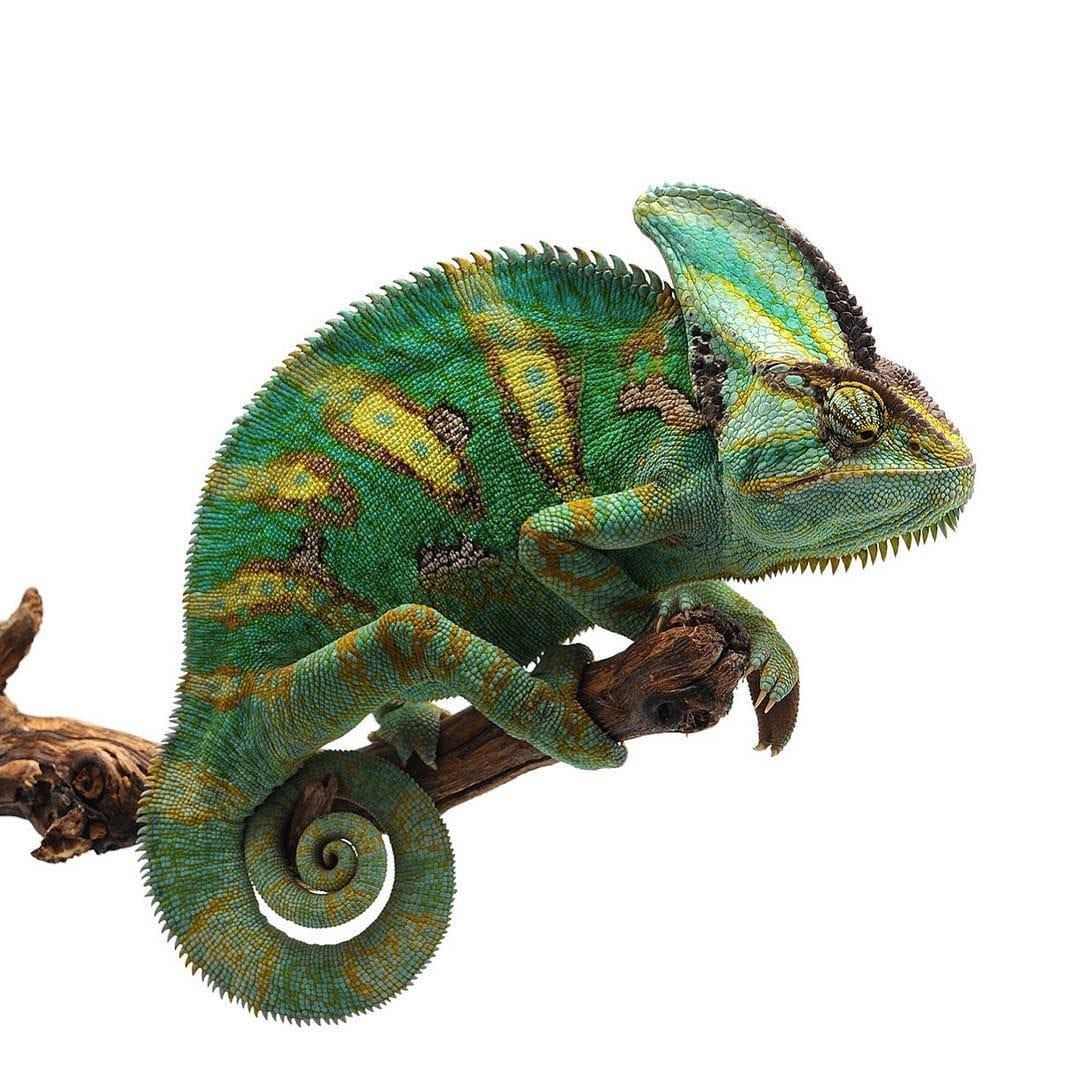Beyond the Veil: Discovering the Enigmatic Veiled Chameleon
The veiled chameleon (Chamaeleo calyptratus), a captivating inhabitant of the Arabian Peninsula, has enthralled both scientists and enthusiasts for decades. Renowned for its color-changing abilities and independently rotating eyes, this remarkable reptile has far more to offer than meets the eye. This article delves into the fascinating world of the veiled chameleon, exploring its unique adaptations, intricate behaviors, and the challenges it faces in an ever-changing world.
Unveiling the Secrets Behind the Veil
A Master of Disguise: Color Change and Beyond
The veiled chameleon’s ability to change color is perhaps its most iconic trait. But contrary to popular belief, this remarkable adaptation is not solely for camouflage. While blending with their surroundings does provide a degree of protection from predators, veiled chameleons also utilize color change as a sophisticated form of communication.
Shifts in hue and pattern can signal a range of emotions, from aggression and dominance to courtship displays and stress levels. For instance, a male veiled chameleon may display vibrant, contrasting colors to intimidate rivals or attract potential mates, while a stressed individual might turn darker or exhibit mottled patterns.
This intricate color language adds a layer of complexity to their social interactions, making them even more intriguing subjects of study. Researchers are still unraveling the full extent of their color communication, unearthing new insights into their social dynamics and cognitive abilities.
A 360-Degree View: The Art of Independent Vision
Another striking feature of the veiled chameleon is its independently rotating eyes. Unlike most vertebrates, whose eyes work in tandem, veiled chameleons can move each eye independently, granting them an almost panoramic field of vision. This remarkable adaptation allows them to scan their surroundings for prey and predators simultaneously, providing a significant advantage in their arboreal habitat.
Imagine scanning the branches above you for a tasty insect while simultaneously keeping an eye on the forest floor for potential threats – that’s the power of independent eye movement! This remarkable adaptation highlights the chameleon’s evolutionary ingenuity in maximizing its sensory perception within its environment.
More Than Just a Pretty Face: Unveiling the Veiled Chameleon’s Cognitive Abilities
While often perceived as solitary creatures with limited cognitive abilities, recent research suggests that veiled chameleons may be more intelligent than previously thought. Studies have shown that they can learn and remember the location of food sources, and some experts believe they may even engage in rudimentary forms of problem-solving.
For instance, captive veiled chameleons have been observed using tools to access food, such as using sticks to dislodge insects from crevices. These findings challenge the conventional view of chameleons as simple, instinct-driven animals, suggesting a capacity for learning and adaptation that is only beginning to be understood.
A Closer Look at the Veiled Chameleon’s World
From Mountains to Coastlines: A Journey Through Their Habitat
Veiled chameleons are native to the Arabian Peninsula, primarily found in the southwestern regions of Saudi Arabia and Yemen. They inhabit a diverse range of habitats, from arid mountains and plateaus to coastal plains and valleys. This adaptability is a testament to their resilience and ability to thrive in varied environments.
Within these habitats, they typically prefer areas with dense vegetation, particularly Acacia trees, which provide ample opportunities for climbing, basking, and ambushing prey. Their ability to tolerate a wide range of temperatures and humidity levels has contributed to their success in these often-harsh environments.
A Balancing Act: The Challenges Faced by Veiled Chameleons
Despite their adaptability, veiled chameleons face growing threats, primarily due to human activities. Habitat loss due to agriculture, urbanization, and deforestation poses a significant challenge to their survival. As their natural habitats shrink and become fragmented, veiled chameleon populations become increasingly isolated and vulnerable to local extinctions.
The illegal pet trade further exacerbates their plight. The demand for exotic pets has led to the unsustainable capture and trade of wild veiled chameleons, decimating populations and disrupting their fragile ecosystems.
Guardians of the Veil: Conservation Efforts and Responsible Pet Ownership
Recognizing the threats faced by veiled chameleons, conservation organizations and researchers are working tirelessly to protect them. Efforts include habitat restoration and conservation programs, as well as initiatives to raise awareness about the importance of responsible pet ownership.
Choosing a veiled chameleon as a pet is a significant responsibility. It requires a commitment to providing proper care, including a spacious enclosure, appropriate lighting and humidity levels, and a varied diet of live insects. Aspiring chameleon owners should thoroughly research their needs and ensure they can provide a stimulating and enriching environment that closely mimics their natural habitat. It is crucial to obtain veiled chameleons from reputable breeders who prioritize ethical and sustainable practices.
By supporting conservation efforts and making informed choices as consumers, we can all play a part in ensuring the survival of these captivating creatures for generations to come.
- Unraveling Einstein’s Legacy: Who Inherited His Genius? - July 14, 2025
- Unlock Einstein’s Family Tree: Bernhard Caesar & Untold Stories - July 14, 2025
- Unveiling Bernhard Caesar Einstein: His Life & Albert Einstein’s Legacy - July 14, 2025
















